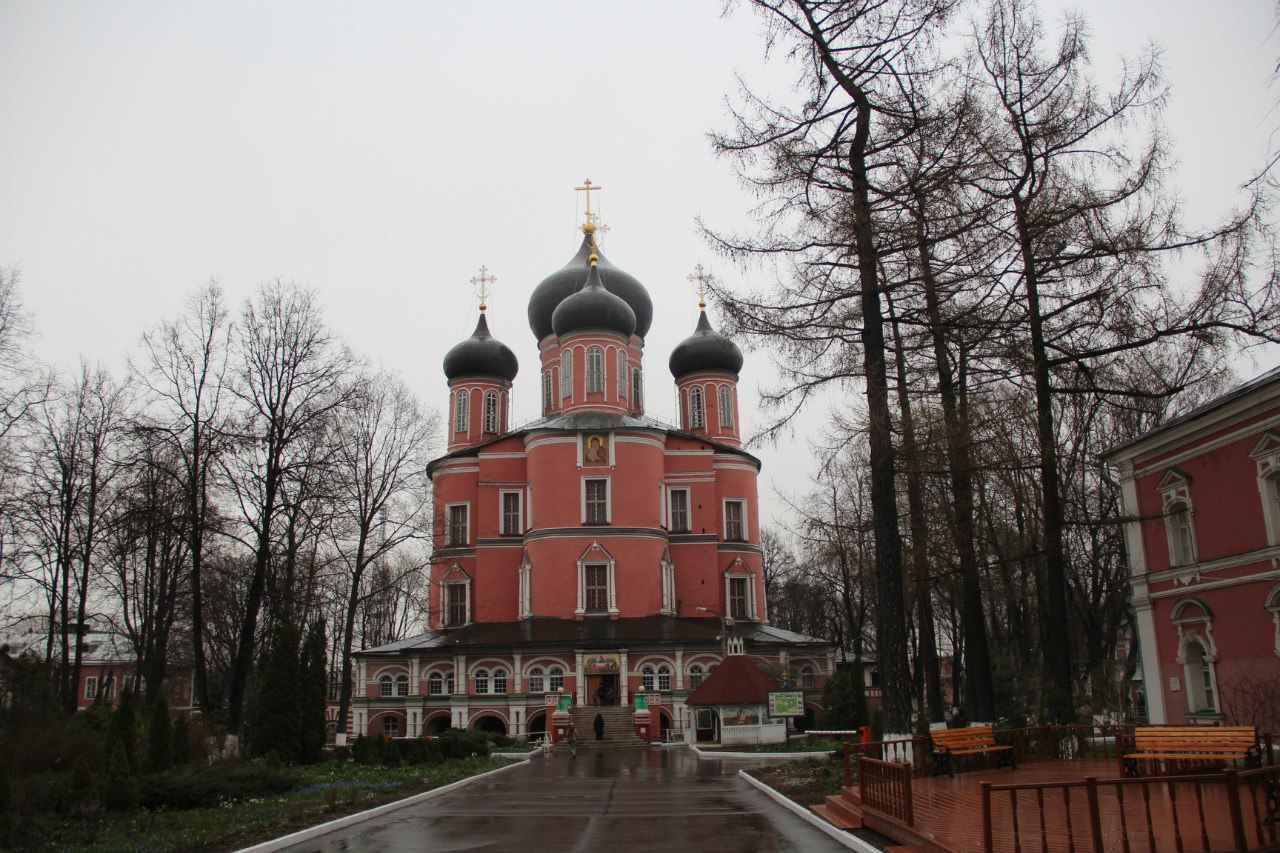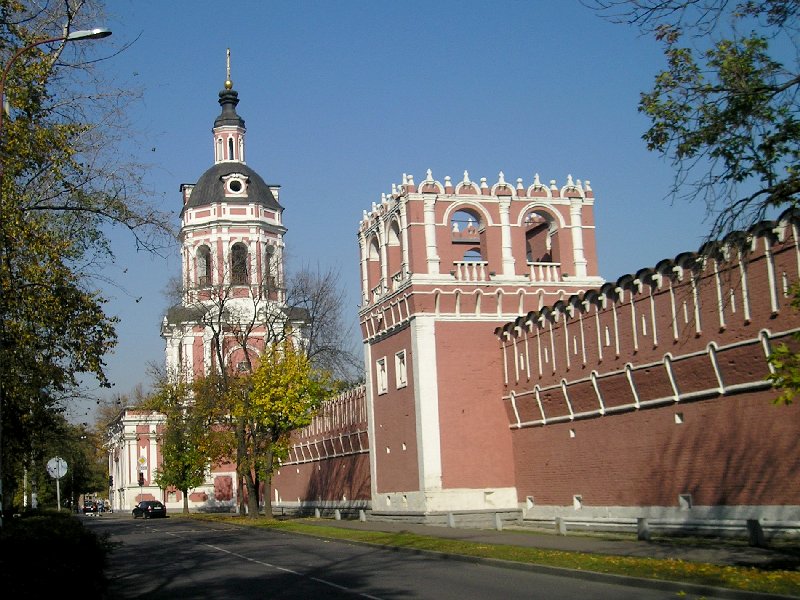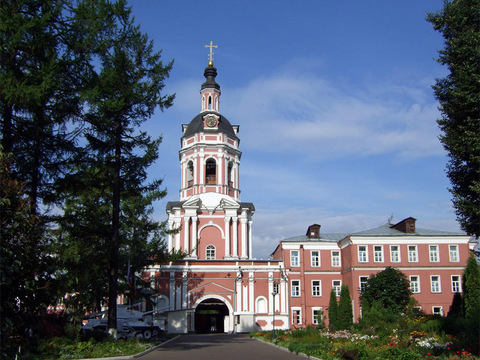Donskoy Monastery is a major monastery in Moscow, founded in 1591 in commemoration of Moscow's deliverance from an imminent threat of Khan Kazy-Girey’s invasion. Commanding a highway to the Crimea, the monastery was intended to defend southern approaches to the Moscow Kremlin.
The monastery was built on the spot where Boris Godunov's mobile fortress and Sergii Radonezhsky's field church with Theophan the Greek's icon Our Lady of the Don had been located. Legend has it that Dmitry Donskoy had taken this icon with him to the Battle of Kulikovo in 1380. The Tatars left without a fight and were defeated during their retreat.
Initially, the cloister was rather poor and numbered only a few monks. As of 1629, the Donskoy Monastery possessed 20 wastelands and 16 peasant households (20 peasants altogether). In 1612, it was taken for one day by the Polish-Lithuanian commander Jan Karol Chodkiewicz. In 1618, Russian Streltsy defeated the Ukrainian Cossacks of Petro Konashevych under the monastery walls.
In the mid-17th century the monastery was attached to the Andreyevsky Monastery. In 1678, however, its independence was reinstated and the cloister received rich donations, including more than 1,400 peasant households. In 1683, the Donskoy Monastery was elevated to the archmandrite level and given 20 desyatinas of the nearby pasturelands. Vidogoshchsky, Zhizdrinsky, Sharovkin, and Zheleznoborovsky monasteries were attached to the Donskoy Monastery between 1683 and 1685.
When the monastery was established, Boris Godunov personally laid the foundation stone of its cathedral, consecrated in 1593 to the holy image of Our Lady of the Don. This diminutive structure, quite typical for Godunov's reign, has a single dome crowning three tiers of zakomara. In the 1670s, they added two symmetrical annexes, and a refectory leading to a tented belltower. Its iconostasis, executed in 1662, formerly adorned one of Moscow churches demolished by the Communists. From 1930 to 1946, the cathedral was closed for services and housed a factory.
The New (or the Great) Cathedral, also dedicated to the Virgin of the Don, was started in 1684 as a votive church of Tsarevna Sophia Alekseyevna. After she fell into disgrace, its construction was funded by private donations. The masons and artisans were invited from Ukraine, which explains some of the cathedral's unusual features. For the first time in Moscow, the five domes were arranged according to the four corners of the Earth (as was the Ukrainian custom). The Old Believers felt offended by this and called the cathedral "Antichrist's Altar". Eight tiers of its ornate baroque iconostasis were carved by Kremlin masters in 1688–1698. The iconostasis' central piece is a copy of the Virgin of the Don, as painted in the mid-16th century. The cathedral frescoes are the first in Moscow to be painted by a foreigner. They were executed by Antonio Claudio in 1782–1785.
After the monastery lost its defensive importance, its walls were reshaped in the red-and-white Muscovite baroque style, reminiscent of the Novodevichy Convent. Eight square and four circular towers with red-blood crowns were put up in 1686–1711. The Holy Gates of the monastery (1693) are topped with the Tikhvin church (1713–1714), noted for its wrought iron grille. A lofty belfry was erected over the western gates from 1730–1753 after designs by Pietro Antonio Trezzini and other prominent architects.












